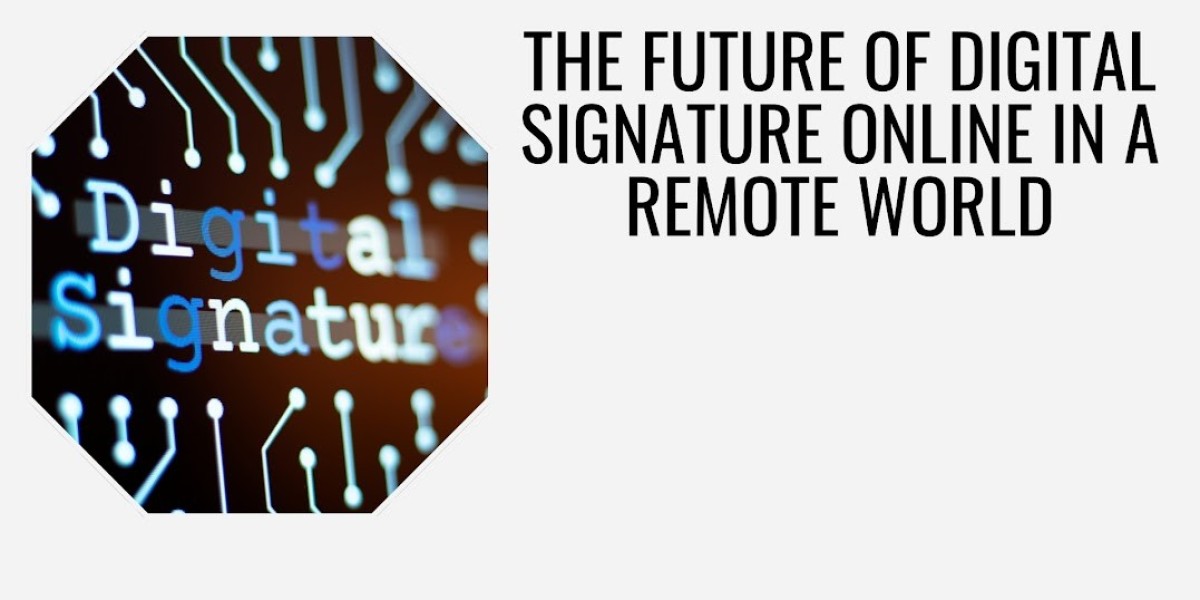The digital transformation of businesses has accelerated rapidly, especially with the global shift towards remote work. In this context, digital signature online have emerged as a pivotal tool, ensuring secure and efficient authentication of documents without the need for physical presence. As organizations continue to adapt to remote operations, understanding the evolving landscape of digital signatures becomes crucial.
1. The Rise of Digital Signatures in Remote Work
The adoption of digital signatures has seen exponential growth, driven by the necessity for remote collaboration and the demand for streamlined workflows. According to a DocuSign report, 95% of organizations either currently use e-signatures or plan to implement them soon.
This surge is attributed to several factors:
Efficiency: Digital signatures eliminate the delays associated with the traditional paper-based process.
Security: Advanced encryption techniques ensure the integrity and authenticity of signed documents.
Compliance: Many jurisdictions have recognized the legal validity of digital signatures, facilitating their widespread adoption.
2. Technological Advancements Shaping Digital Signatures
The future of digital signatures is being shaped by several technological innovations:
a. Mobile Compatibility
With the proliferation of smartphones and tablets, there's a growing demand for mobile-friendly digital signature solutions. This ensures that users can sign documents on the go, enhancing flexibility and responsiveness.
b. Blockchain Integration
Blockchain technology offers a decentralized and tamper-proof method for verifying digital signatures. By recording signature data on a blockchain, organizations can ensure transparency and immutability, reducing the risk of fraud.
c. Artificial Intelligence (AI)
AI is enhancing the digital signature process by:
Automating Verification: AI algorithms can quickly verify the authenticity of signatures.
Detecting Anomalies: Machine learning models can identify unusual patterns, flagging potential fraudulent activities.
d. Biometric Authentication
Incorporating biometric data, such as fingerprints or facial recognition, adds layer of security to digital signatures, ensuring that only authorized individuals can sign documents.
3. Legal and Regulatory Landscape
The legal recognition of digital signatures varies across jurisdictions, but there's a global trend towards standardization:
India: The Aadhaar eSign service allows individuals to sign documents digitally using their Aadhaar credentials, streamlining the authentication process.
United States: The Electronic Signatures in Global and National Commerce (ESIGN) Act grants legal validity to electronic signatures.
European Union: The eIDAS regulation provides a standardized framework for electronic identification and trust services, including digital signatures.
As remote work becomes more prevalent, it's anticipated that more countries will adopt similar regulations, further legitimizing digital signatures.
4. Industry-Specific Applications
Digital signatures are revolutionizing various industries:
Healthcare: Ensuring the confidentiality and integrity of patient records.
Finance: Facilitating secure transactions and compliance with regulatory requirements.
Legal: Streamlining contract management and reducing turnaround times.
Real Estate: Enabling remote property transactions, especially crucial during times when in-person meetings are challenging.
5. Future Predictions
Looking ahead, several trends are expected to shape the future of digital signatures:
Enhanced User Experience: Simplified interfaces and seamless integrations with other digital tools.
Global Standardization: Unified regulations to facilitate cross-border transactions.
Integration with Digital Identity Wallets: Allowing users to manage their digital identities and signatures in one secure location.
Environmental Impact: Reducing paper consumption and promoting sustainable business practices.
6. The Role of Cloud Technology in Digital Signatures
As businesses transition their operations to the cloud, digital signature services are increasingly being hosted on cloud platforms. This shift provides several major benefits:
a. Scalability and Accessibility
Cloud-based digital signature solutions allow businesses to scale their operations without significant infrastructure investment. Whether a company is onboarding five new employees or five thousand, cloud platforms can handle the load without performance degradation.
Moreover, documents can be signed from anywhere, at any time—this is especially important for remote teams distributed across various time zones.
b. Cost Reduction
By moving digital signature operations to the cloud, companies reduce the need for physical servers, IT maintenance, and paper-based processes. Cost savings also come from improved efficiency and decreased document turnaround time.
c. Real-Time Collaboration
Cloud-based digital signature tools often include collaboration features, enabling real-time edits, comments, and version control. These features are critical in a remote work setting, where in-person coordination is limited or non-existent.
7. The process to apply for Digital Signature Online
Step 1: Visit Our Website
Go to our website to start the process.
Step 2: Fill in Your Details
User Type: Choose if you are an individual or an organization.
Certificate Type: Pick if you need it just for signing documents or for both signing and encryption.
Validity: Choose how long you want the certificate to last.
Personal Info: Enter your name, phone number, email, and address.
Agree to Terms: Check the box to agree to the terms.
Submit: Click the submit button.
Step 3: Choose Token Option
Already Have a Token?: If you have a USB token, choose "No." If you need a new one, choose "Yes."
Step 4: Make Payment
Payment: Enter your payment details and choose how you want to pay (net banking, credit card, debit card, or UPI).
Step 5: Complete the Process
Review: Make sure all your information is correct.
Submit: Click submit and wait for a confirmation email.
Step 6: Get Your Digital Signature
You’ll receive your digital signature on a USB token drive after processing.
Also read:- What is emudhra?
Conclusion
Digital signatures are no longer a luxury but a necessity in our increasingly remote and digital world. As technology continues to evolve and as legal frameworks adapt, digital signatures will become even more integral to business operations, offering enhanced security, efficiency, and convenience.








